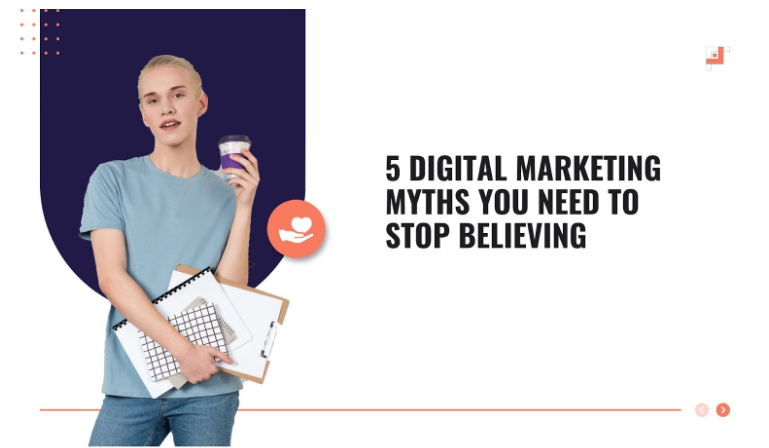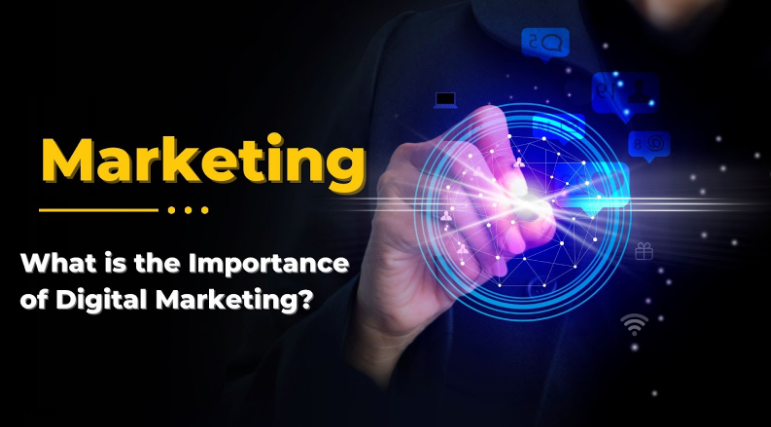Digital marketing has become an essential part of business strategies today. Yet, despite its prevalence, there are many misconceptions about how it works and how effective it is. These myths often hinder businesses from fully embracing digital marketing or making the most of their marketing efforts. In this article, we’ll debunk the top five digital marketing myths that need to be stopped, so you can make informed decisions and get the best results from your campaigns.
1. Digital Marketing Is Only for Big Businesses
One of the most common myths about digital marketing is that it is only suitable for large corporations with big budgets. This misconception stems from the idea that digital marketing campaigns require significant financial resources and a large team of professionals to execute.
The Reality: Digital marketing is equally beneficial for small businesses, startups, and individual entrepreneurs. With the right tools and strategies, even small businesses can run effective digital marketing campaigns on a budget. Platforms like social media, email marketing, and Google Ads offer cost-effective solutions that are scalable depending on your business size and goals. In fact, many small businesses have used digital marketing to grow exponentially by targeting niche audiences and using tailored messaging.
2. More Traffic Equals More Sales
It’s easy to assume that if you generate a lot of traffic to your website, sales will naturally follow. While traffic is important, it’s not the sole indicator of success in digital marketing.
The Reality: Traffic is just one part of the equation. What really matters is converting that traffic into leads and sales. Focus on improving conversion rates through effective landing pages, compelling calls to action (CTAs), and persuasive product pages. You can drive targeted traffic that’s more likely to convert by using advanced targeting techniques, like audience segmentation and remarketing. Simply getting people to visit your website isn’t enough—your content and user experience need to drive action.
3. Social Media Marketing Is All About Posting Regularly
Many businesses believe that social media marketing success is based solely on posting content frequently. While consistency is important, it’s not the only factor that determines the effectiveness of social media campaigns.
The Reality: Quality and engagement matter far more than the frequency of posts. Social media is a platform for building relationships and trust with your audience, not just bombarding them with content. It’s essential to focus on creating high-quality content that resonates with your audience, sparks conversations, and encourages interaction. Additionally, understanding the best times to post and engaging with followers through comments, messages, and polls can make a significant difference in your campaign’s success.
4. SEO Is a One-Time Task
Another widespread myth is that SEO (Search Engine Optimization) is a one-time task. Many believe that once their website is optimized, they can simply sit back and wait for the results to come.
The Reality: SEO is an ongoing process, not a one-off effort. Search engines like Google are constantly updating their algorithms, and your competitors are always optimizing their content as well. To maintain and improve your search rankings, you need to continuously update your content, build backlinks, and monitor performance. SEO requires long-term commitment and regular adjustments to stay ahead of the competition.
5. Email Marketing Is Dead
With the rise of social media and other communication channels, many people have declared email marketing dead. Some believe that people don’t check their inboxes anymore, and emails are less effective than they once were.
The Reality: Email marketing is far from dead—it remains one of the most effective ways to engage with customers and drive conversions. In fact, email has a higher ROI compared to many other digital marketing channels. The key to successful email marketing is personalization, segmentation, and crafting relevant, valuable content for your audience. Emails that are targeted, timely, and useful still see high open rates and lead to increased sales.
Conclusion
In the ever-evolving world of digital marketing, it’s important to separate fact from fiction. Believing in these common myths can lead to wasted time and missed opportunities. By understanding the realities behind these misconceptions, you can approach your digital marketing campaigns more strategically, and use your resources effectively to drive traffic, increase engagement, and boost sales. Embrace the right strategies, and you’ll see tangible results in your digital marketing efforts.














